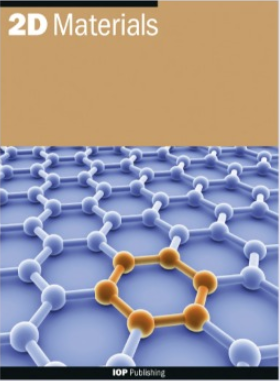Role of chalcogen vacancies and hydrogen in the optical and electrical properties of bulk transition-metal dichalcogenides
IF 4.3
3区 材料科学
Q2 MATERIALS SCIENCE, MULTIDISCIPLINARY
引用次数: 0
Abstract
Like in any other semiconductor, point defects in transition-metal dichalcogenides (TMDs) are expected to strongly impact their electronic and optical properties. However, identifying defects in these layered two-dimensional materials has been quite challenging with controversial conclusions despite the extensive literature in the past decade. Using first-principles calculations, we revisit the role of chalcogen vacancies and hydrogen impurity in bulk TMDs, reporting formation energies and thermodynamic and optical transition levels. We show that the S vacancy can explain recently observed cathodoluminescence spectra of MoS2 flakes and predict similar optical levels in the other TMDs. In the case of the H impurity, we find it more stable sitting on an interstitial site in the Mo plane, acting as a shallow donor, and possibly explaining the often observed n-type conductivity in some TMDs. We also predict the frequencies of the local vibration modes for the H impurity, aiding its identification through Raman or infrared spectroscopy.铬空位和氢在块状过渡金属二卤化物的光学和电学特性中的作用
与其他半导体一样,过渡金属二卤化物(TMDs)中的点缺陷预计会对其电子和光学特性产生强烈影响。然而,尽管过去十年间有大量文献报道,但识别这些层状二维材料中的缺陷一直颇具挑战性,而且结论也存在争议。利用第一原理计算,我们重新审视了查尔根空位和氢杂质在块状 TMD 中的作用,报告了形成能量以及热力学和光学转变水平。我们发现,S 空位可以解释最近观测到的 MoS2 薄片阴极发光光谱,并预测其他 TMD 中也存在类似的光学水平。至于 H 杂质,我们发现它位于 Mo 平面的一个间隙位点上更为稳定,起到浅供体的作用,并可能解释在某些 TMD 中经常观察到的 n 型导电性。我们还预测了 H 杂质的局部振动模式频率,有助于通过拉曼光谱或红外光谱对其进行识别。
本文章由计算机程序翻译,如有差异,请以英文原文为准。
求助全文
约1分钟内获得全文
求助全文
来源期刊

2D Materials
MATERIALS SCIENCE, MULTIDISCIPLINARY-
CiteScore
10.70
自引率
5.50%
发文量
138
审稿时长
1.5 months
期刊介绍:
2D Materials is a multidisciplinary, electronic-only journal devoted to publishing fundamental and applied research of the highest quality and impact covering all aspects of graphene and related two-dimensional materials.
 求助内容:
求助内容: 应助结果提醒方式:
应助结果提醒方式:


